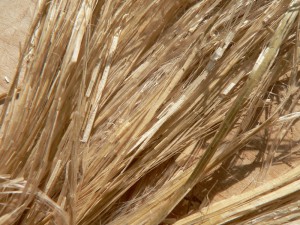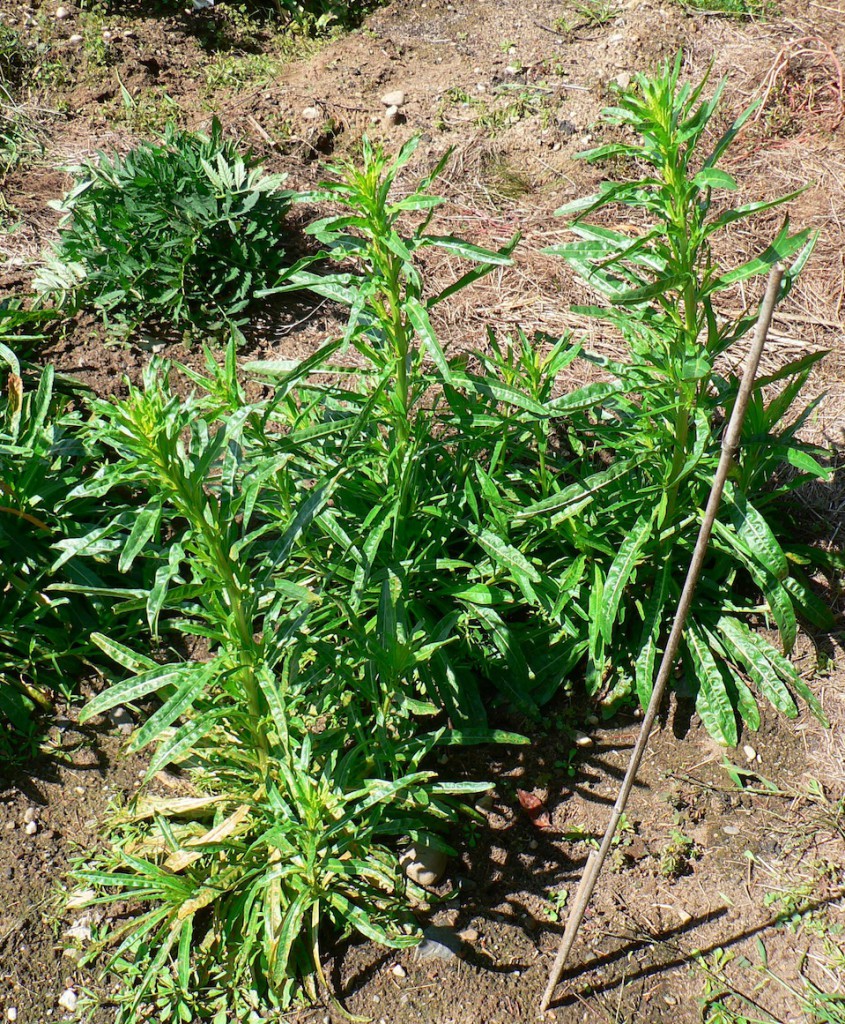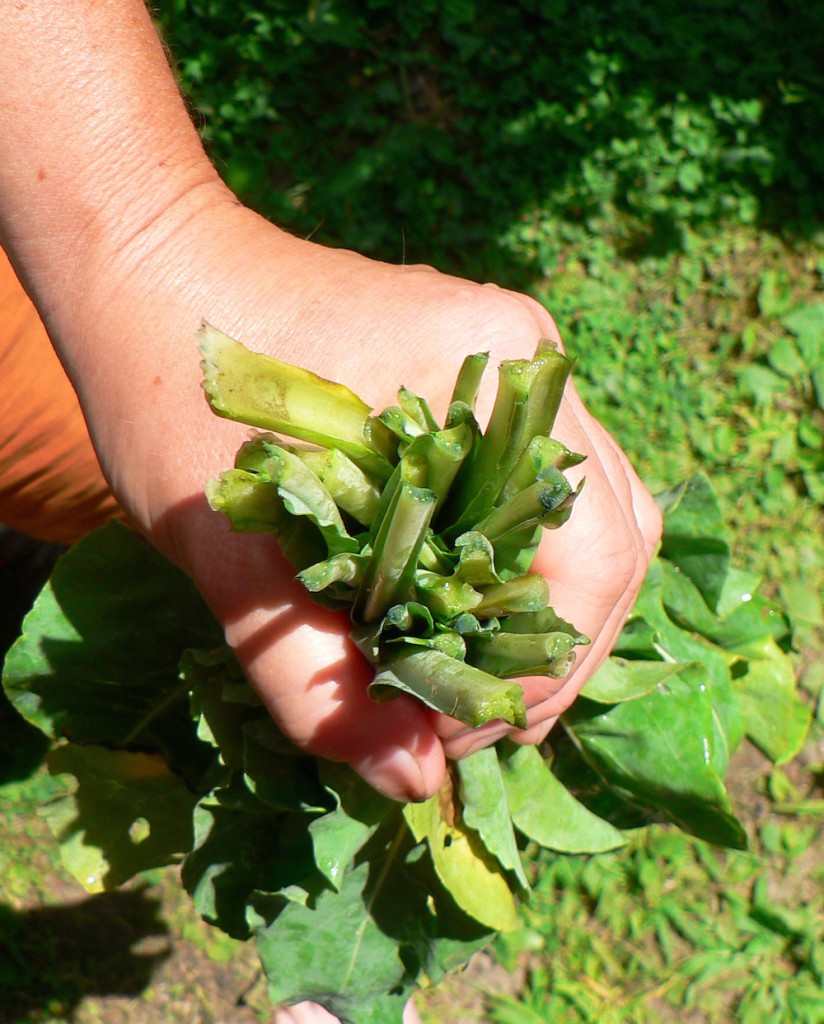After I wrote about our gloriously low-humidity weather, which provided the perfect climate for dressing flax, I realized I had not included any photos. Here are some illustrations of my modified “hardware store tools” technique, including a new innovation since last time I posted about using this method.
The hardware store tools that I use are a paintbrush cleaning tool, a 3-inch-wide joint compound knife, a wooden cutting board, and a flick carder designed for wool. And a dust mask. And gloves. The gloves are new, but my hands have been a lot more sensitive this summer.
I’ve been dressing largely under-retted flax which has already been broken with a flax brake. The bundles I made to dry and ret the flax are too large to handle all at once using this method, so I separate them into thirds or even fourths. The reason I think the flax is under-retted is that the cuticle, or skin, of the stalk is really hard to get off, and the fibers stick together in ribbons. The lighter colored, papery-looking pieces below are the cuticle.
 Continue reading “Flax Dressing Photos” →
Continue reading “Flax Dressing Photos” →



